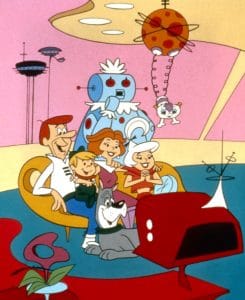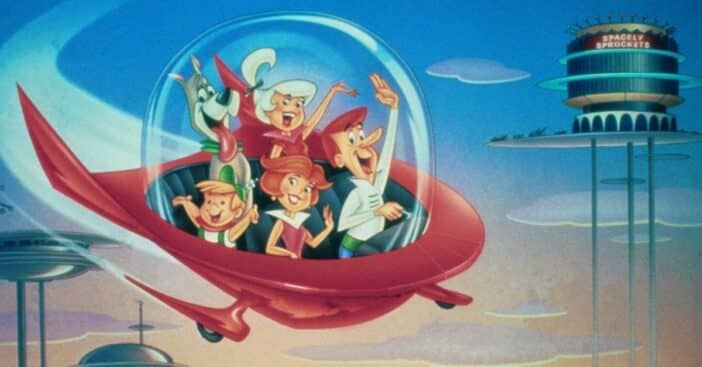
This autumn marks 60 years since the premiere of The Jetsons — George Jetson, his boy Elroy, daughter Judy, and Jane, his wife. Of course, there is no forgetting the two characters that defined humanity’s dreams for the future: Astro the talking dog and Rosie the Robot maid. Just imagine, a future where pets could talk back, where the house could be tirelessly maintained thanks to a few circuits.
But this cartoon captured our wonder in so many other ways, too, thanks to all the gears fitting right into place: an imaginative premise that fully realizes its potential, a relatable cast for all age groups, a strong, imaginative animation team, and excellent timing. The Jetsons lived in 2062 and we’re 60 years since its 1962 premiere. So, how far off is the show’s vision of life on Earth today?
The spark of creativity
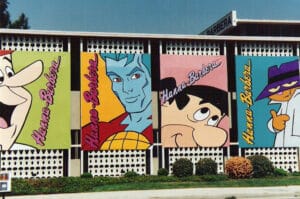
Famed production giant Hanna-Barbera conceived The Jetsons as a Space Age counterpart to The Flintstones of the Stone Age; where dinosaurs and primitive tools creatively kept the world moving, but on this show, wondrous scientific innovations literally uplifted entire families into the skies. The first episode aired on ABC on Sunday, September 23, 1962, with 23 more episodes to follow. Similar to Fred Flintstone’s ancient misadventures, The Jetsons enjoyed a laugh track — though not a huge audience, initially, as it competed with Dennis the Menace and Walt Disney’s Wonderful World of Color.
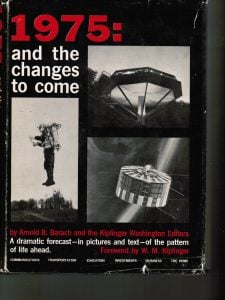
RELATED: Plans Unveiled For All New City To Be Built In American Desert
The Jetsons, their friends, and colleagues vaguely mention living in the 21st century, though only promotional material specified that the date was exactly 100 years in the future. As for the visuals and technological wonders, though, Arnold B. Barach’s book 1975: And the Changes to Come helped cartoonists breathe life into their fictional future. The Space Age began with the ’57 launch of Sputnik and captured the world’s imagination ever since. The Jetsons embodied that by tapping into humanity’s ideas of a future just a few decades and then a full century into the future. Interestingly, the show did present some advancements we already enjoy while also benefitting from big technological steps of its own.
Down to earth and head in the clouds
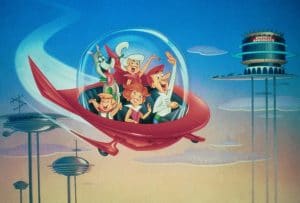
The Jetsons can, without exaggeration, be credited with accurately predicting a lot of aspects about society left to continue with its big innovative leaps into the future. H. G. Wells’s The Time Machine predicts a dystopic future in 802,701, and though life as we know it ended thousands of years prior to that in his narrative, we still have time. The Jetsons did not foretell our doom, even though duck and cover drills were increasingly common and the fear of a nuclear ending made such an outlook understandable.
Instead, viewers got to see humanity’s potential realized, uninterrupted by some permanent end or drastic setback. The result is a 2062 that doesn’t look too dissimilar to 2022 six decades later. It would not be until 1978 that Friedrich Wolff conjured up tanning beds and yet the Jetsons had access to one with various settings. If not hunkering down for a warm summer glow, people can — and do — engage in space tourism. By 2062, it’s a bit more accessible to the public via Grand Central Space-tion and we don’t have a Moonhattan Tilton Hotel yet, but much of what seemed like a wild fantasy is already a reality in 2022.
‘The Jetsons’ knew the automated achievements in store for humanity
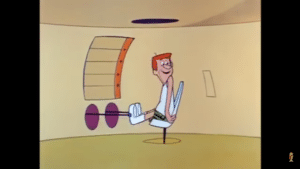
Automation plays a big role in George Jetson’s day-to-day life. It, along with carefully engineered AI, helps the whole family, in fact. The most obvious example would be Rosie, meticulously programmed to tend to the house, fulfill the family’s requests, mimic life — and probably follow the prime directive to do no harm as a robot. Artificial intelligence is all around us with increasing success at mimicking life, and programmers have shown no signs of slowing that momentum down. But there is also the marriage of software and hardware that gave both the Jetsons and us things like Roombas. Jane Jetson’s list of chores primarily involves pushing a machine’s buttons and setting it off on its course for the day, not unlike sending a Roomba off to clean the floor.

George’s morning prep routine before work involves mostly standing on a moving walkway while metal arms and tools get him cleaned up. Everything is programmed to fulfill its purpose. It’s the same for most levels of society in The Jetsons and it’s the same in so many aspects of life today. As the Tahoe Daily Tribune notes, California vineyards have robots dedicated to picking robots. Robots were utilized for China’s “Zero Covid” policy during the Olympics, substituting people bartending and handing out hand sanitizer.
The nanotech is in the details
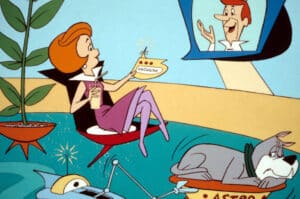
With big leaps in technology come cultural shifts as a response, and vice-versa. The advent of the cordless phone was just a decade back when The Jetsons premiered and would not gain a foothold in American households until twenty years later. Yet The Jetsons presented viewers with a future that offered video calls, a feature we not only did acquire but came to rely on with increasing insistence.
Technology these days is all around us and defines many aspects of business, education, and interpersonal interactions. The Jetsons predicted readers getting their news from a screen instead of printed paper. Drones are commonplace. Concerts can take place as holograms and diners can munch on 3D-printed food while watching their flat-screen TVs.
‘The Jetsons’ defined, predicted, and worked within the parameters of big innovations
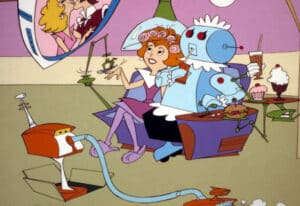
We are exactly forty years away from the world The Jetsons predicted for us, a mix of the near tomorrow and a distant future. Many of the features the short-lived series wound up being startlingly accurate, surpassing the most educated guesses in much bigger productions before and after it. At the same time, plenty of other speculative media offered predictions in the general vicinity of what we have today. So, what makes it so special when The Jetsons said it?

The Jetsons was uniquely ahead of its time, inadvertently setting the stage for things to come, at once enhanced by technology and limited by those breakthroughs. It was ABC’s first show broadcast in color, a perfect example of the wonders of tomorrow, highlighted by vibrant colors. But not all viewers could appreciate this move because many sets were still black-and-white exclusively. Only affiliates in major cities could watch The Jetsons as intended, which was a significant factor against it, in addition to its competitive Sunday slot. It wisely stuck to what it did well, though, which included drawing from good sources for inspiration; Barach’s 1975 book envisioned a future with instantaneous language translation and ultrasonic dishwashers in our future.
And those simple wonders are what The Jetsons visualized for everyone to see with their very eyes until we got there ourselves. Short-lived though it was, The Jetsons endures today above other pieces of media with similar technological predictions because it presented a future of unfettered hope, a tomorrow viewers could look forward to without trepidation. In some ways, we are on track for where The Jetsons expected we’d be, and in others, it is something we still have time to work towards before 2062 arrives.
